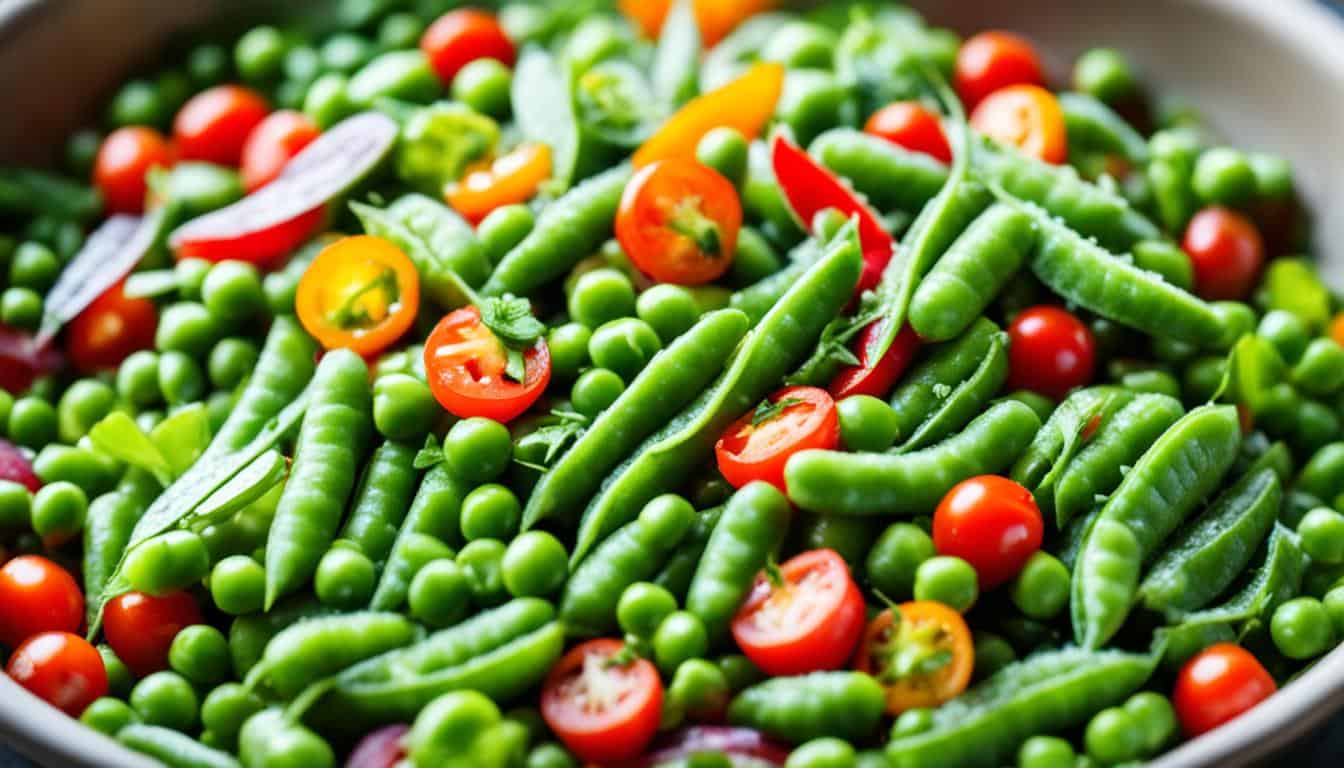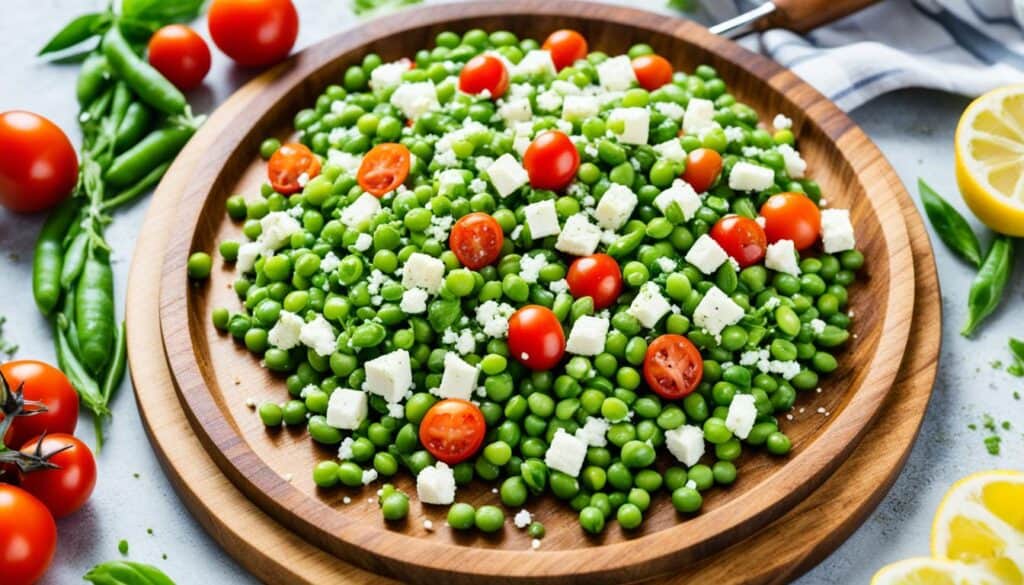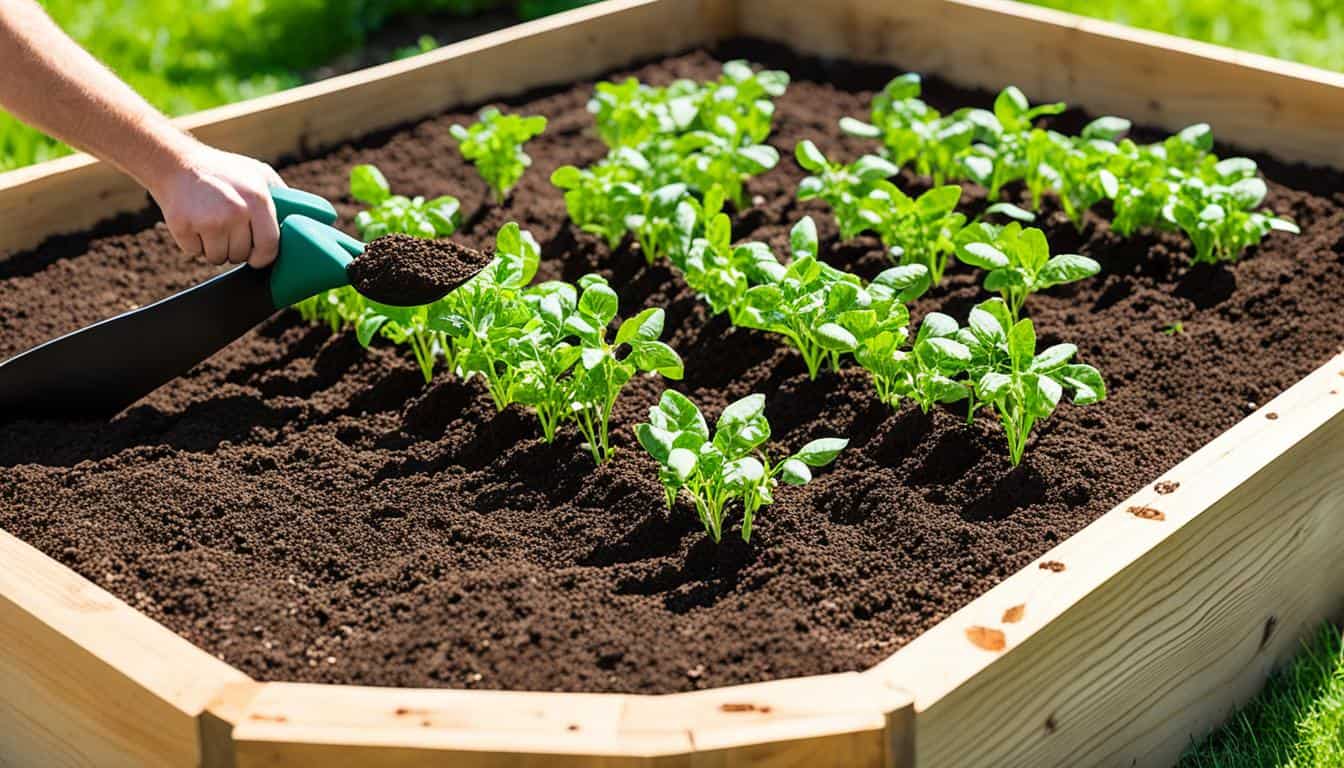Did you know that zipper peas, also known as Southern zipper peas, are a Southern favorite that has been enjoyed for generations? These humble legumes are not only delicious but also offer a wealth of nutritional benefits. Whether you’re a fan of Southern cuisine or simply looking to explore new flavors, zipper peas are a must-try in your kitchen.
Key Takeaways:
- Zipper peas, also known as Southern zipper peas, are a popular legume in the South.
- These peas are rich in protein, high in fiber, and packed with essential vitamins and minerals.
- Choose the freshest zipper peas for optimal flavor and quality.
- Before cooking, clean and shell the peas and consider soaking them for enhanced tenderness.
- Cook zipper peas using boiling or pressure cooking techniques for perfect results.
What are Zipper Peas?
Zipper Peas, also known as Southern peas, cream peas, or crowder peas, are a type of field pea that is popular in the South. They are characterized by their unique appearance and distinct flavor. The pods of zipper peas open with a “zipping” sound when harvested, revealing the succulent peas inside. These peas are rich in protein, high in fiber, and packed with vitamins and minerals. They are a versatile legume that can be used in various dishes.
Zipper Peas: Nutritional Facts
| Nutrient | Amount per 100g |
|---|---|
| Protein | 7g |
| Fiber | 5g |
| Folate | 45mcg |
| Potassium | 238mg |
| Iron | 1mg |
Nutritional Benefits of Zipper Peas
When it comes to nutritional benefits, zipper peas are a powerhouse of goodness. Incorporating these flavorful legumes into your diet can provide various advantages for your overall well-being.
Plant-Based Protein
Zipper peas are an excellent source of plant-based protein, making them an ideal choice for vegetarians and vegans. Protein is an essential macronutrient that plays a vital role in numerous bodily functions—including building and repairing tissues, producing enzymes and hormones, and supporting immune function.
High in Fiber
Fiber is an essential component of a healthy diet, and zipper peas are packed with it. High fiber content helps promote digestive health by supporting regular bowel movements and preventing constipation. Furthermore, a fiber-rich diet can assist in maintaining a healthy weight by providing a feeling of fullness and reducing overeating.
Essential Vitamins and Minerals
Zipper peas pack a punch when it comes to essential vitamins and minerals. These legumes are a great source of folate, potassium, and iron—a trio of nutrients vital for several bodily functions.
“Folate is crucial during pregnancy for the proper development of the fetus and helps support overall cell health. Potassium, on the other hand, plays a significant role in regulating blood pressure and maintaining heart health. Lastly, iron is essential for oxygen transport and energy production within the body.”
Let’s take a closer look at the nutritional composition of zipper peas:
| Nutrient | Amount per 100g |
|---|---|
| Protein | 8.44g |
| Fiber | 3.9g |
| Folate | 63μg (16% of DV) |
| Potassium | 235mg (5% of DV) |
| Iron | 1.76mg (10% of DV) |
Source: United States Department of Agriculture (USDA)
Eating zipper peas not only satisfies your taste buds but also nourishes your body with essential nutrients. Now that we know the nutritional benefits of zipper peas, let’s move on to selecting the freshest peas in section 4.
Selecting the Freshest Zipper Peas
To ensure the best flavor and quality, it’s important to select the freshest zipper peas available. Here are some tips to help you choose the perfect peas for your recipes:
Look for Firm and Plump Pods
When buying zipper peas, look for pods that are firm and plump. Gently squeeze the pods to check for juiciness and ensure they are free from any soft spots. Fresh zipper peas should feel sturdy and not have any wrinkles or signs of drying out.
Opt for Vibrant Green Color
The color of zipper peas can be a good indicator of freshness. Choose peas with a vibrant green color as this suggests they are recently harvested and at their peak flavor. Avoid peas that appear dull or yellowish as they may be past their prime.
Check for Moisture
Moisture in the pods is a sign of recent harvesting. Gently press on the pods, and if you feel any dampness, it indicates that the peas are fresh. Moisture helps maintain the tenderness and flavor of zipper peas.
Now that you know how to select the freshest zipper peas, let’s explore where you can find them:
Where to Buy Zipper Peas
The best sources for fresh zipper peas are farmers’ markets, family gardens, and local grocery stores. Farmers’ markets often have a wide range of fresh, locally grown produce, including zipper peas. Check with your local farmers’ market for availability during the peak season.
You can also consider growing zipper peas in your own garden. They are relatively easy to cultivate and can be planted in the spring or early summer. Look for seed packets or young plants at nurseries or gardening centers.
If you prefer the convenience of buying zipper peas from a grocery store, check the produce section for fresh legumes. Look for packages labeled “zipper peas” or ask the store staff for assistance in locating them.
By selecting the freshest zipper peas and knowing where to buy them, you can ensure that your dishes are bursting with flavor and nutritional goodness.
Preparing Zipper Peas for Cooking
Before diving into the delicious world of zipper peas, it’s important to properly prepare them for cooking. This ensures that you get the best flavors and textures out of these nutritious legumes. Here’s a step-by-step guide on preparing zipper peas:
- Clean the peas: Start by rinsing the zipper peas under cold water to remove any dirt or debris. This helps to ensure that your final dish is free from any unwanted particles.
- Shell the peas: Once the peas are clean, carefully shell them. Take your time to remove the peas from the pods, discarding any discolored or damaged ones. This process allows you to select only the best peas for cooking.
- Consider soaking: For enhanced tenderness and reduced cooking time, you can soak the shelled zipper peas. Soaking them for a few hours or overnight helps to soften the peas, making them easier to cook. It also aids in the removal of antinutrients, which can interfere with nutrient absorption.
By following these simple steps, you’ll be well-prepared to cook zipper peas to perfection. Now let’s move on to exploring some delightful cooking techniques for these versatile legumes.
Nutritional Content of Zipper Peas
| Nutrient | Amount per 100g |
|---|---|
| Protein | 6g |
| Fiber | 4g |
| Vitamin A | 5% of the Daily Value (DV) |
| Vitamin C | 8% of the DV |
| Iron | 4% of the DV |
Cooking Techniques for Perfect Zipper Peas
When it comes to cooking zipper peas, there are a few techniques that can help you achieve perfection. Whether you prefer a traditional stovetop method or a quick pressure cooking approach, these techniques will bring out the best flavors in these delicious legumes.
Boiling Method
The boiling method is a classic way to cook zipper peas, allowing you to infuse them with aromatic flavors. Here’s how to do it:
- Soak the zipper peas overnight to enhance tenderness and reduce cooking time.
- Rinse the soaked peas and add them to a pot of boiling water.
- Include aromatic ingredients such as garlic, onion, and a bay leaf to enhance the flavor.
- Simmer the peas until they are tender but still retain a slight bite, typically around 20-30 minutes.
- Drain the cooked peas and season them with salt and pepper to taste.
This method allows the zipper peas to absorb the flavors of the aromatics, resulting in a delicious and comforting dish.
Pressure Cooking
If you’re short on time but still want to enjoy perfectly cooked zipper peas, pressure cooking is the way to go. Here’s how:
- Soak the zipper peas for a few hours or according to the instructions of your pressure cooker.
- Drain the soaked peas and transfer them to the pressure cooker.
- Add water or vegetable broth to cover the peas.
- Close the pressure cooker lid and set it to high pressure.
- Cook the peas for the recommended time, typically around 10-15 minutes.
- Release the pressure according to the manufacturer’s instructions.
- Drain the cooked peas and season them as desired.
Pressure cooking ensures that the zipper peas retain their nutritional value while cooking them quickly and efficiently.
By using these cooking techniques, you can enjoy perfectly cooked zipper peas that are bursting with flavor and nutritional benefits.
Serving Suggestions for Zipper Peas
Once your zipper peas are cooked to perfection, they can be served in various ways. Here are some serving suggestions to elevate your zipper pea dishes:
1. Simple Side Dish:
Serve the zipper peas as a delicious and nutritious side dish. Season them with a pinch of salt, a sprinkle of freshly ground pepper, and a drizzle of extra virgin olive oil. These simple additions will enhance the natural flavors of the peas, making them a satisfying accompaniment to any meal.
2. Zipper Pea Salad:
Add a protein boost and a burst of freshness to your salads by tossing in cooled zipper peas. Mix them with your favorite greens, such as crisp lettuce or peppery arugula. You can also add other vegetables like cherry tomatoes, cucumbers, and red onions for added texture and flavor. Finish with a light dressing of lemon vinaigrette or balsamic vinaigrette to tie the flavors together.
3. Zipper Peas with Grains:
Pair zipper peas with grains to create hearty and satisfying main courses. Mix them with cooked rice, quinoa, or your favorite grains. The combination of zipper peas and grains provides a balanced meal packed with protein, fiber, and essential nutrients. You can also add herbs and spices like parsley, thyme, or smoked paprika to add depth and complexity to the dish.
Remember, these serving suggestions are just the beginning. Get creative in the kitchen and experiment with different flavors and ingredients. Zipper peas are versatile legumes that can complement a wide range of dishes, adding a touch of vibrant color and a hint of Southern charm.
| Serving Suggestion | Description |
|---|---|
| Simple Side Dish | Serve the zipper peas seasoned with salt, pepper, and olive oil. |
| Zipper Pea Salad | Toss cooled zipper peas into salads for added protein and freshness. |
| Zipper Peas with Grains | Pair zipper peas with rice, quinoa, or other grains for hearty main courses. |
Conclusion
Incorporating zipper peas into your culinary repertoire opens up a world of flavors and possibilities. These nutritious legumes offer a range of health benefits and can be prepared in various delicious ways. From simple side dishes to incorporating them into salads and main courses, zipper peas are a versatile ingredient that deserves a place in your kitchen.
Explore the flavors of zipper peas and experiment with different cooking techniques to discover your favorite way to enjoy them. Whether you boil them with aromatic ingredients or use a pressure cooker for a quick and efficient cooking process, zipper peas can be a delightful addition to any meal.
Don’t miss out on the nourishment these legumes provide. Their high protein and fiber content, along with essential vitamins and minerals, make them a fantastic choice for a nutritious diet. So next time you’re looking for a flavorful and healthy ingredient, consider zipper peas and let your culinary creativity soar!







Leave a Reply